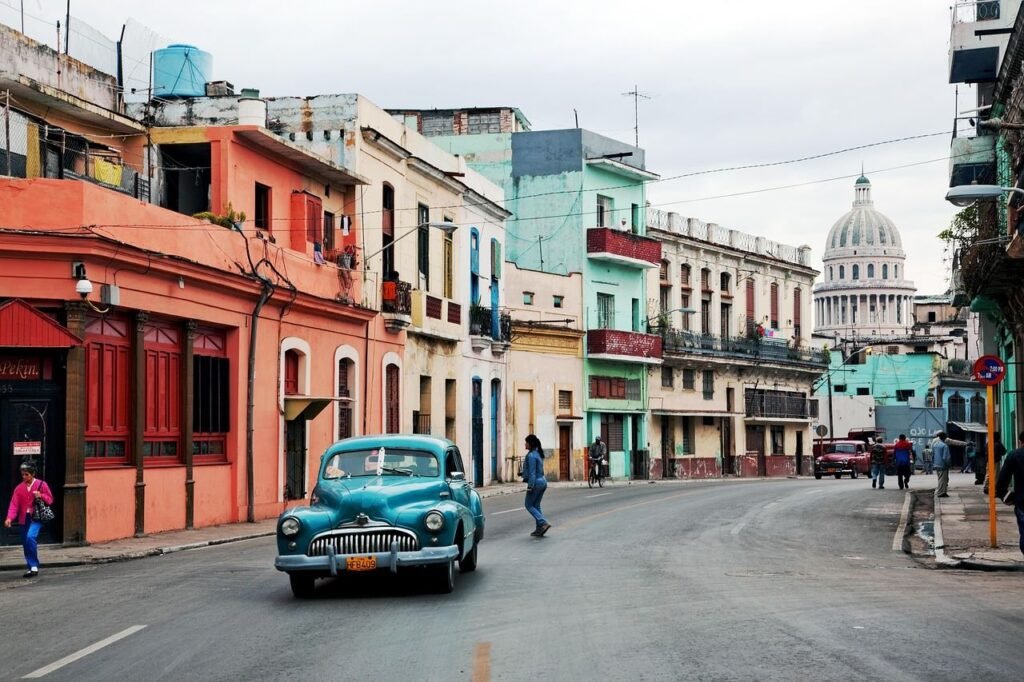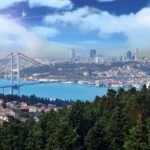
Discover Florence: The Cradle of the Renaissance
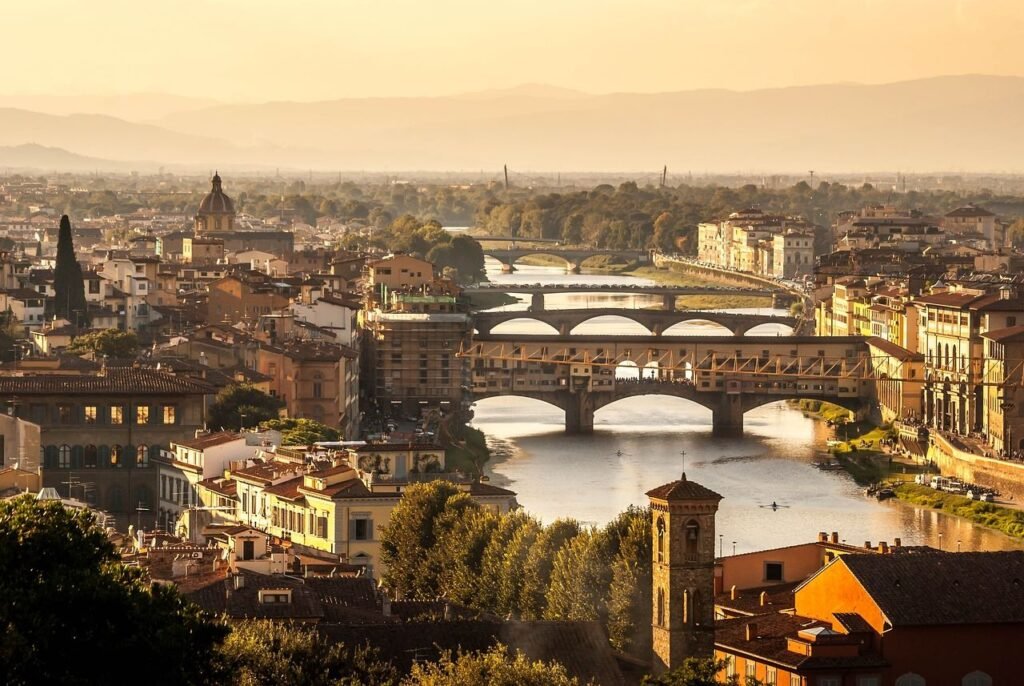
Overview:
Florence, the capital city of Italy’s Tuscany region, is globally celebrated for its unparalleled contribution to art, architecture, and culture.
Known as the birthplace of the Renaissance, Florence boasts a rich history, stunning art, beautiful landscapes, and a world-class culinary scene.
Top Attractions:
- The Uffizi Gallery: Home to the world’s greatest collection of Italian Renaissance art, featuring works by Michelangelo, Leonardo da Vinci, and Botticelli.
- The Duomo: Florence’s iconic cathedral, formally known as the Cattedrale di Santa Maria del Fiore, is a masterpiece of Renaissance architecture. Its magnificent dome, designed by Brunelleschi, offers panoramic views of the city.
- Ponte Vecchio: The oldest bridge in Florence, lined with jewelry shops, offers a picturesque view over the Arno River.
- Palazzo Vecchio: This town hall features art by Michelangelo and Donatello, along with stunningly decorated rooms.
- The Accademia Gallery: The home of Michelangelo’s David, along with other Renaissance artworks.
Culinary Experiences:
- Tuscan Cuisine: Sample local specialties like ribollita (bread soup), bistecca alla fiorentina (Florentine steak), and cantucci (almond biscuits).
- Wine Tasting: Tuscany is famous for its wines. Don’t miss a chance to taste Chianti, Brunello di Montalcino, and other regional wines.
Shopping:
- Florence is known for its leather goods, artisan crafts, and high fashion. Visit the markets and boutique shops for unique finds.
Cultural Tips:
- Respect the Art: Many artworks are centuries old and require careful preservation. Follow all guidelines when visiting museums and historical sites.
- Dress Code for Churches: Ensure to cover shoulders and knees when visiting cathedrals and churches.
Day Trips:
- Consider short trips to nearby Tuscan towns like Siena, Pisa, and the Chianti wine region for a broader experience of Tuscany.
Best Time to Visit:
- The best times to visit Florence are from May to September, when the weather is warm and the city’s plazas and gardens come to life.
Getting Around:
- Florence is a walkable city with an efficient public transport system. The historic center is best explored on foot.
Florence is a city where every corner speaks of history, art, and beauty.
Whether you’re an art lover, a food enthusiast, or just in search of a charming Italian experience, Florence promises a memorable journey through the heart of the Renaissance.
Paris, France: A City of Romance, Art, and Timeless Elegance
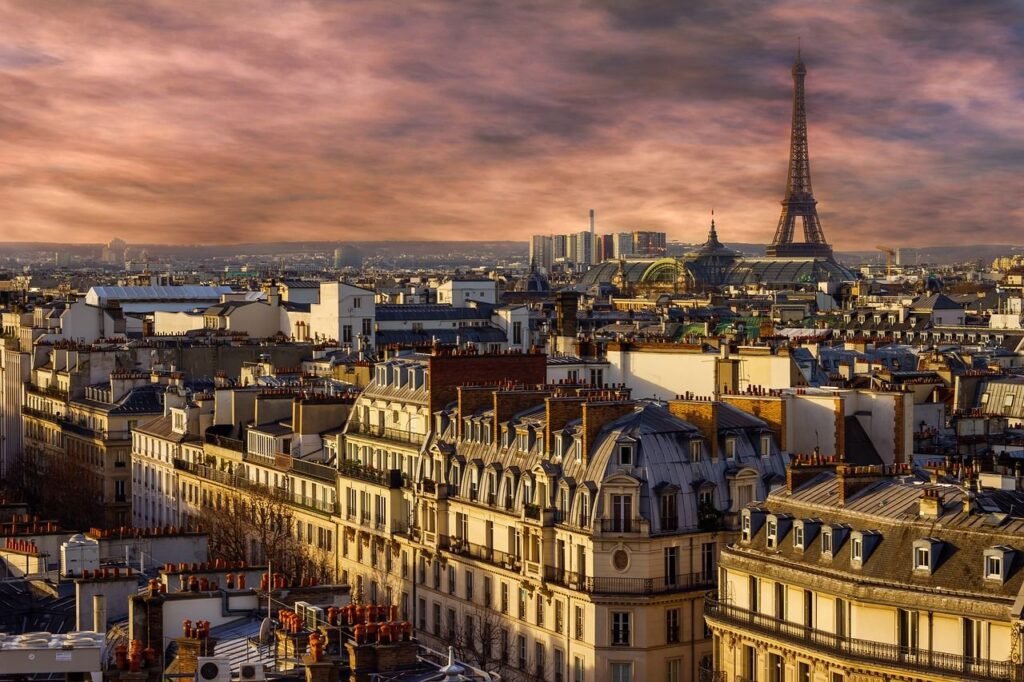
Must-Visit Attractions:
- Eiffel Tower: The iconic symbol of Paris, offering breathtaking views of the city.
- Louvre Museum: Home to thousands of works of art, including the Mona Lisa.
- Notre-Dame Cathedral: A masterpiece of French Gothic architecture.
- Montmartre: A historic area known for the Sacré-Cœur Basilica and artists’ studios.
- Champs-Élysées and Arc de Triomphe: Iconic boulevard known for its theaters, cafes, and luxury shops.
- Sainte-Chapelle: Known for its stunning stained-glass windows.
- Seine River Cruises: Offers a unique perspective of Paris’ landmarks.
Culinary Scene:
- Paris is a global culinary capital, famous for its pastries, cheese, and wine.
- Must-try dishes: Croissants, escargot, coq au vin, and macarons.
- From Michelin-starred restaurants to charming sidewalk cafes and bustling food markets like Rue Cler.
Accommodation:
- Wide range of options, from luxury hotels in the 1st arrondissement to charming boutiques in Le Marais.
- Staying in central districts (arrondissements) offers proximity to major attractions.
- Budget-friendly options available in outer districts and near major train stations.
Getting Around:
- Extensive public transport network including the Métro, buses, and RER trains.
- Walking is a great way to explore the city’s charming streets.
- Velib’ bike-share and electric scooters are popular for short distances.
Cultural Insights:
- Paris is a center for fashion, art, and culture.
- French is the primary language, with English widely spoken in tourist areas.
- The city has a rich literary and artistic history, with numerous museums and galleries.
Safety Tips:
- Generally safe, but beware of pickpockets, especially in crowded tourist areas and on public transport.
- Stay vigilant in popular tourist destinations and when using ATMs.
Day Trips:
- Versailles: Famous for the Palace of Versailles and its gardens.
- Giverny: Monet’s home and gardens.
- Loire Valley: Known for its vineyards, historic towns, and châteaux.
Events and Festivals:
- Paris Fashion Week: One of the most important fashion events globally.
- Bastille Day: National day of France celebrated with fireworks and parades (July 14).
- Nuit Blanche: An annual all-night arts festival.
Shopping:
- Galeries Lafayette and Printemps: Famous department stores for fashion and luxury goods.
- Le Marais: Offers trendy boutiques and vintage shops.
- Flea Markets: Like the Marché aux Puces de Saint-Ouen, for antiques and unique finds.
Paris, with its combination of historical grandeur, artistic richness, and vibrant street life, offers an unforgettable experience.
Whether you’re indulging in its world-class cuisine, exploring its historic streets, or marveling at its artistic treasures, Paris captivates everyone who visits.
Zanzibar City, Tanzania: A Blend of Rich History, Exotic Beaches, and Cultural Diversity
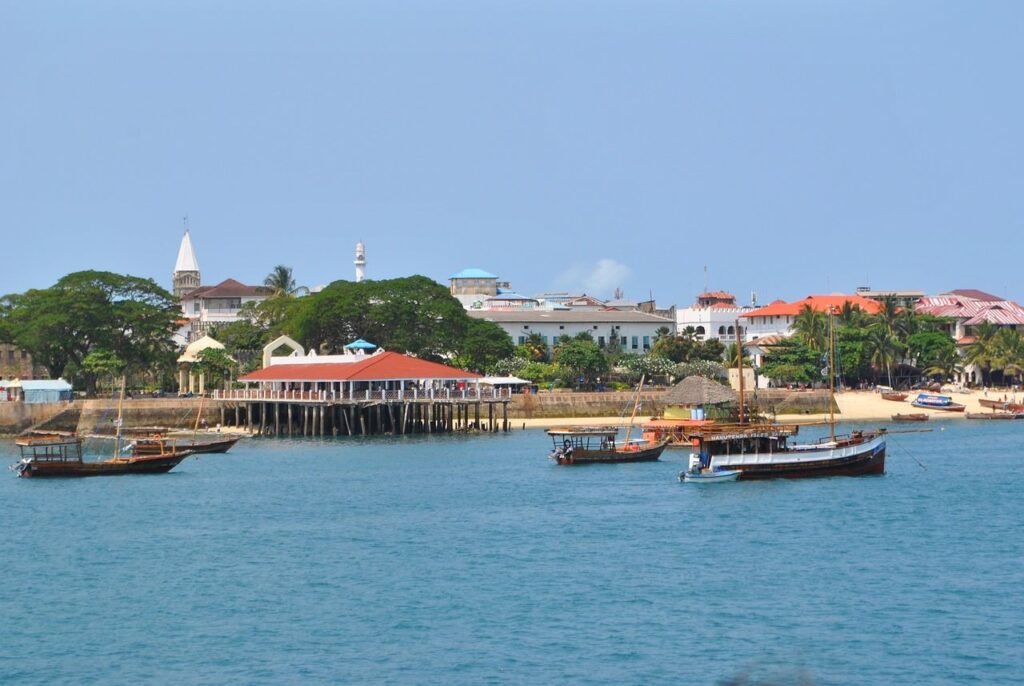
Must-Visit Attractions:
- Stone Town: A UNESCO World Heritage site with a mix of Arabic, Persian, Indian, and European architectural elements.
- Forodhani Gardens: A seafront park famous for its evening food market.
- House of Wonders (Beit-al-Ajaib): A historic building and museum showcasing Swahili and Zanzibar culture.
- Old Fort (Ngome Kongwe): An ancient fort with cultural exhibitions and artisan shops.
- Spice Farms: Zanzibar is known as the “Spice Island”; spice tours are a must-do.
- Prison Island (Changuu): Known for its giant tortoises and snorkeling opportunities.
- Jozani Chwaka Bay National Park: Home to the rare Red Colobus monkeys and mangrove forests.
Culinary Scene:
- Zanzibar’s cuisine is influenced by Swahili, Indian, Arab, and Portuguese flavors.
- Specialties: Seafood, Zanzibar pizza, biryani, and pilau.
- Enjoy fresh seafood at local restaurants or beachfront dining experiences.
Accommodation:
- Options from luxury beachfront resorts to budget-friendly guesthouses.
- Stone Town offers culturally rich hotel experiences in historic buildings.
- Beach areas like Nungwi and Paje provide serene coastal accommodations.
Getting Around:
- Stone Town can be easily explored on foot.
- For longer distances, taxis (called “dala dalas”) are commonly used.
- Hiring a car or a scooter can be convenient for more flexibility.
Cultural Insights:
- Zanzibar has a predominantly Muslim population; respectful attire and behavior are appreciated.
- Swahili culture is prevalent, with Swahili being the main language alongside English.
- Zanzibar has a rich history as a trading hub, reflected in its diverse population and culture.
Safety Tips:
- Zanzibar is relatively safe but exercise common sense, especially at night.
- Be cautious with valuables and in crowded places to avoid pickpocketing.
Day Trips:
- Spice Farm Tours: Learn about the variety of spices grown on the island.
- Mnemba Island: Ideal for snorkeling and diving to explore rich marine life.
- Pemba Island: Known for its lush, hilly terrain and excellent diving spots.
Events and Festivals:
- Sauti za Busara: An African music festival held in February.
- Zanzibar International Film Festival: The largest film and arts festival in East Africa, showcasing films, music, and dance (July).
- Mwaka Kogwa: A traditional festival celebrated in Makunduchi with mock fights and rituals (July).
Shopping:
- Stone Town Markets: For local handicrafts, textiles, jewelry, and spices.
- Memories of Zanzibar: A popular shop for quality souvenirs and gifts.
- Darajani Market: Offers a range of goods from fresh produce to clothing and spices.
Zanzibar City, with its intriguing historical sites, vibrant markets, stunning beaches, and rich cultural tapestry, offers a unique and unforgettable experience.
Whether you’re wandering through the narrow alleys of Stone Town, relaxing on its pristine beaches, or exploring its lush spice farms, Zanzibar City is a destination that captivates the senses and soul.
Venice, Italy: A Serene City of Canals and Rich History
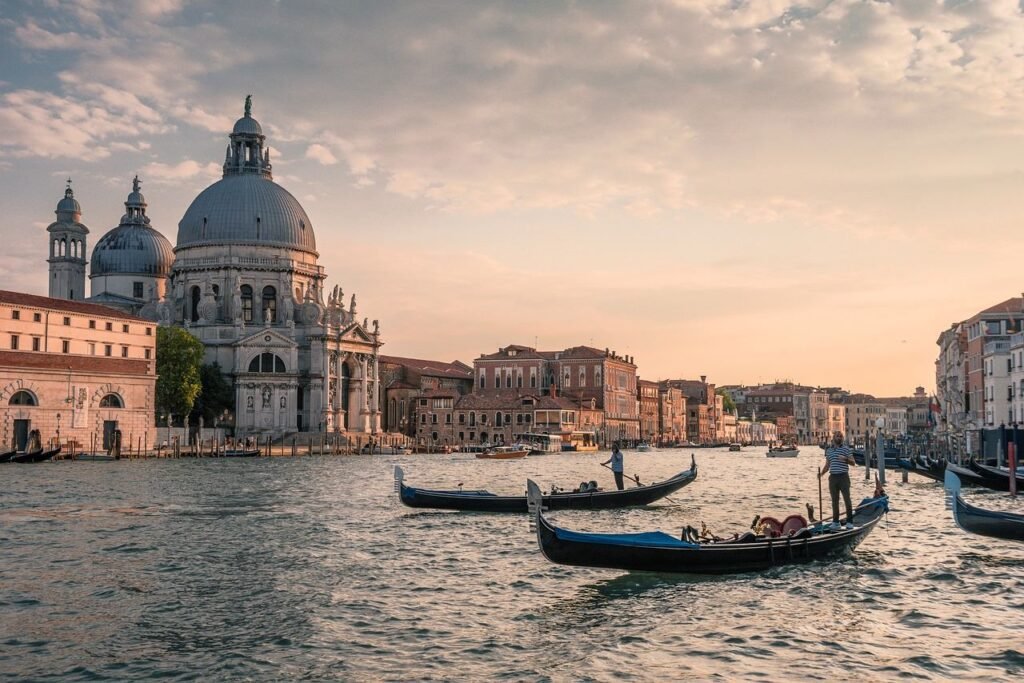
Must-Visit Attractions:
- St. Mark’s Square (Piazza San Marco): The heart of Venice, home to St. Mark’s Basilica and the Campanile.
- Grand Canal: The main waterway, lined with palaces; best experienced by vaporetto or gondola.
- Rialto Bridge: The oldest of the four bridges spanning the Grand Canal, surrounded by shops and markets.
- Doge’s Palace (Palazzo Ducale): A symbol of Venice’s maritime and artistic glory.
- Bridge of Sighs: Famous for its history and architecture.
- Murano and Burano Islands: Known for glass-making and colorful fishermen’s houses, respectively.
- Gallerie dell’Accademia: Houses a significant collection of Venetian paintings.
Culinary Scene:
- Venetian cuisine features seafood, risotto, and polenta.
- Must-try dishes: Cicchetti (Venetian tapas), Sarde in Saor, Squid ink pasta.
- Enjoy traditional Venetian dining in local “bacari” (wine bars).
- Experience fine dining in upscale restaurants along the Grand Canal.
Accommodation:
- Range of options from luxury hotels in historic buildings to affordable guesthouses.
- Stay near St. Mark’s Square for proximity to major sights or choose the quieter Dorsoduro or Cannaregio districts.
Getting Around:
- Walking and water transport are primary means of travel.
- Vaporetti (water buses) are efficient for longer distances.
- Gondolas for a traditional, though more expensive, experience.
- Traghetti (gondola ferries) for crossing the Grand Canal.
Cultural Insights:
- Venice is a city steeped in history and art, with a rich maritime past.
- Venetian Gothic architecture is a significant attraction.
- The city is known for its annual events and artistic heritage.
Safety Tips:
- Generally safe, but beware of high tides and flooding, especially in autumn and winter.
- Beware of pickpockets in crowded areas.
Day Trips:
- Verona: Famous for its Roman amphitheater and as the setting of Shakespeare’s “Romeo and Juliet.”
- Padua (Padova): Known for its historic architecture and university.
- Prosecco Wine Region: Explore the vineyards and sample Prosecco.
Events and Festivals:
- Venice Carnival (Carnevale di Venezia): Famous for its elaborate masks and costumes (February/March).
- Venice Biennale: One of the most prestigious cultural events, alternating between art and architecture exhibitions.
- Venice Film Festival: The oldest film festival in the world, part of the Biennale (September).
Shopping:
- Rialto Market: For fresh food and local produce.
- Mercerie and Calle Larga XXII Marzo: Main shopping streets with boutiques and designer brands.
- Murano Glass: Authentic glassware as souvenirs from Murano.
Venice, a city of unparalleled beauty and charm, offers an enchanting experience with its winding canals, historic architecture, and vibrant cultural scene.
From gondola rides on the Grand Canal to exploring the labyrinth of its quaint streets, Venice is a city that captivates the heart of every traveler.


